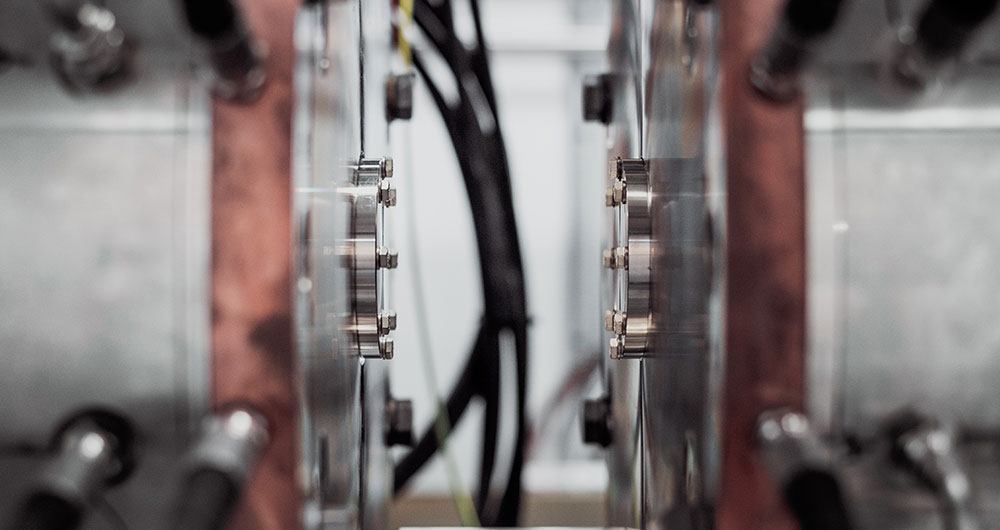According to the Office of National Statistics, 82% of people in the UK shopped online in 2019 (a rise of 4% against 2018). That’s a lot of goods being shipped, and a lot of packaging being used. And, given how much of that packaging will have been too big for the goods being shipped, it’s a lot of waste and unnecessary cost.
When it comes to unnecessary packaging, waste and cost aren’t the only factors to consider. There is another side too: consumer opinion. A recent survey by the Chartered Institute of Marketing found that 88% of people think their online shopping comes with too much packaging. And, a further 30% said too much packaging puts them off ordering with the same company again.
Thankfully, for businesses who sell goods online, packaging innovation means tailor-made boxes, produced on demand are now an option available to retailers and manufacturers. A solution that, in the longer-term, can save them time and money while building a loyal customer base.
What is on demand packaging?
On demand packaging is an innovative packaging solution that allows businesses to produce boxes to the exact size of the goods they’re shipping. State of the art machinery scans goods and cuts corrugated cardboard to the exact size needed. They’re a simple and effective solution to the problem of too much packaging. The results are less waste, less cost, higher levels of customer satisfaction and a smaller environmental footprint.
On demandPackaging innovation with
There are a number of on demand packaging solutions on the market and available in the UK, including:
CMC CartonWrap
CMC’s CartonWrap is an automated packaging system capable of producing 1,000 on demand boxes an hour. Each box fits the exact size and shape of the goods to be shipped. These are made in ‘real-time’ after an order is processed and ready for shipping.
Businesses around the world use Carton Wrap. This includes Lakeland in the UK. However, the machine is primarily designed for larger enterprises that ship in high volumes. As a result, and due to its size, it doesn’t work as well for smaller businesses or those with limited warehouse space.
Neopost CVP-500
Neopost’s CVP-500 is a smaller machine, though possibly still not ideal for businesses with limited space due to its size. The machine is designed for mid-market businesses and makes up to 500 boxes an hour. Each fits the product it is shipping perfectly. According to Neopost, the CVP-500 is equivalent to 15 packaging stations and saves businesses up to 20% on cardboard compared to traditional, standardised, packaging.
Ribble Right Size
Panotec’s machinery is available exclusively in the UK through Ribble, a Lancashire based packaging company who have been delivering innovative packaging solutions to its customers for 80 years. Right Size works seamlessly with Ribble’s fanfold cardboard, meaning it saves businesses 25% on cardboard and 100% on void fillers. It also means businesses have consistent access to high-quality materials and don’t have to worry about MOQs.
Unlike Neopost and CMC’s automated packaging machines, Right Size machinery is available in three sizes, meaning there is likely one that works for most businesses. Their smallest model, the Compak 1.4, for example, is only 1.4 metres wide and can produce 600 boxes an hour. There is also the Compak Evo, which produces 720 boxes per hour and the larger Next Mode model produces 840 boxes per hour.
The Benefits of On Demand Packaging
While there is an initial outlay to buying an on demand packaging system, something which may make businesses nervous, the short and long-term benefits make any investment well worthwhile.
Speed
On demand packaging systems are fast, much faster than packaging by hand. As a result, businesses can be much more responsive to customer demand, fulfilling orders more quickly. It’s worth remembering that, as well as speed, companies should consider volume. As we’ve seen, different machinery can produce different numbers of boxes in an hour.
It is important that businesses choose equipment that produces boxes at the rate they need them to. It is easy for businesses to over-estimate how many boxes they need. It is worth noting that Amazon’s new automated packaging system, for example, only produces 700 boxes an hour.
Accuracy
Systems like Right Size take the guesswork out of packaging. Businesses can be confident knowing that they will never order packaging that is too big or too small for the goods they want to ship. Plus, because systems produce labels at the same time as boxes, there is less chance of an order shipping to the wrong location.
Flexibility
Not all products fit nicely into a standard box. For example, Ribble work with Showcard who produce point of sale and large scale display posters. Both need specific packaging to ensure goods arrive at their destination in excellent condition. This isn’t always possible with ‘one size fits all’ boxes. It is possible with packaging innovation where businesses can size boxes to meet their specific needs.
Costs
Following the initial layout, on demand packaging machines can lead to huge costs savings, including:
Materials
Neopost estimates their CVP-500 saves 20% on conventional packaging. Right Size, meanwhile, can save a business 25% in corrugated cardboard, a significant saving. There is also less need for void filler. This is one of the most expensive parts of packaging because a) it costs money to buy and b) it costs money to transport. With void filler, businesses are basically paying to ship air. With systems such as Right Size, because it uses corrugated cardboard to protect goods, the need for void filler is completely eliminated.
Warehousing
Storing standardised boxes takes up space, resulting in warehouse costs that can be avoided by on demand packaging. An added benefit here is that the less packaging a business has to store, the more space they have to store goods (while not having to increase their square footage).
Errors
Goods picked and packed by hand are more likely to contain errors, leading to customers receive the wrong goods. When this happens, businesses sometimes take it as a loss, estimating it costs more to ship the products back that have the customer keep them. There is, however, a cost for then sending out the correct item. Packaging innovation reduces the risk of errors as it scans goods before packaging; some systems have digital displays that allow staff to match goods to orders.
Damage
The chances of goods being damaged in transit increases when they are incorrectly packaged. This can be the result of boxes being the wrong size or insufficient void filler. Businesses then have to send replacement goods, which they have to pay for.
Transport
While the goods businesses ship determines their transport costs, most say shipping is their biggest outlay. In fact, some industry experts estimate transportation costs can run as high as 50%. Packaging innovation reduces the size of the packaging, meaning businesses can load more goods into their delivery vans. As a result, shipping goods requires fewer trucks and fewer journeys. This, in turn, reduces running costs and a company’s carbon footprint.
The Environmental Impact
Perhaps one of the most positive benefits of on demand packaging systems is that they reduce a business’s environmental impact. This is becoming increasingly important to consumers. The Charted Institute of Marketing survey we mentioned earlier, for example, found:
- 36% of people surveyed judge a company’s ethics based on their packaging
- 17% had complained to a company because of excess packaging with their goods
- 10% were less likely to place an online order because of the amount of packaging a company used
- 25% were willing to pay more for sustainable packaging; this is something Ribble offer in all their packaging, 100% of which is recyclable.
With packaging innovation and on demand solutions, businesses can honestly tell their customers that they are reducing their:
- Levels of waste
- Carbon footprint
- Use of plastic
At the same time, they are increasing the use of recyclable materials. This should have a positive impact on how they are seen and could increase sales.
Competitive Advantage
Finally, on demand packaging systems offer businesses a competitive edge. They are simple and inexpensive to run, increase productivity and reduce costs. And, because they are innovative and not widely used, they allow businesses to work in ways others in their market can’t. This is incredibly important when profit margins are tight, or markets are crowded. It provides a way for businesses to offer their customers a competitive price and a high level of service. Both of which should lead to increased sales and repeat orders.
Over time, because of the benefits that packaging innovation offers and customer demand for sustainable packaging, there is no doubt that on demand packaging will increase in popularity. What better time, then, than now, to invest in a state-of-the-art product that could change the way you do business and your customers see you?













